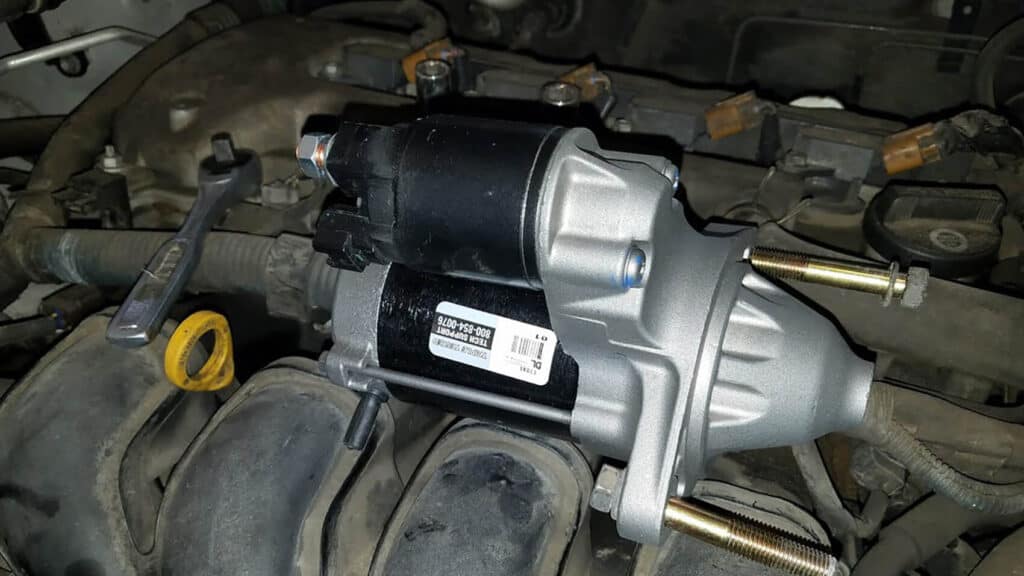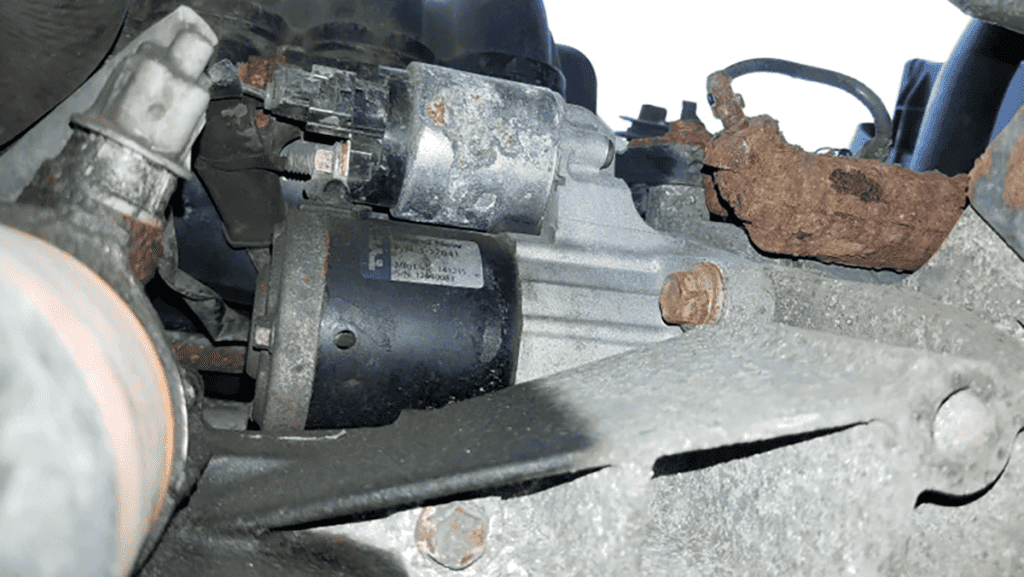Introduction: Recognizing the Importance of a Functional Starter Motor
When your car’s engine purrs to life with a turn of the key, you’re witnessing the unsung hero of your vehicle – the starter motor – at work. Much like how a spectacular Broadway show cannot commence without the invisible efforts of the stage crew, your car cannot start without a properly functioning starter motor.
Identifying Trouble: Common Signs Your Starter Motor is Failing
Have you ever watched a crime drama? Detectives are always on the lookout for signs that reveal the antagonist’s scheme. Similarly, there are clues hinting that your starter motor is plotting its retirement.
If the engine stubbornly refuses to turn over, this suggests a serious issue with the starter motor. It’s as if the starter is saying, “Not today, mate!” and deciding to take a day off without notifying you.
Imagine sitting in your car, turning the key, and instead of the comforting rumble of the engine coming to life, you’re greeted by a grating grinding noise. This is a clear signal that something is amiss. This sound is typically due to the starter drive gear not engaging properly, leaving you with a performance more suited to a horror film soundtrack than a morning commute.
Picture this: you’re all set for a peaceful drive, and as you turn the key It feels like your car is trying to communicate in Morse code. Instead of a secret message, it’s telling you about a potential problem with the starter motor or battery. This is usually a sign that the starter motor isn’t receiving enough power to crank the engine, leaving you with an unexpected and puzzling silence.
Recognizing these signs early is like catching a movie plot twist before it happens. It’s essential to prevent an unwanted blockbuster spectacle from playing out in your life!

Uncovering the Root: The Most Common Cause of Starter Motor Failure
Ever wondered, “What is the biggest cause of starter motor failure?” It’s like pondering over what makes an ice cream melt on a sunny day. Often, it’s simply wear and tear from usage over time, much like how even the most sturdy pair of sneakers will eventually show signs of wear and tear after enough 5K runs.
Other culprits can be heat damage, acting like a villainous dragon breathing fire onto your starter motor. Oil leaks too can be a troublemaker, sneaking in like unwelcome house guests and causing havoc in your engine. Awareness is the first step towards prevention, just like knowing ice cream melts faster on a sunny day!
Decoding Sensations: What Does a Bad Starter Motor Feel Like?
Have you ever tried starting a campfire with wet wood? If yes, then you might already know what a bad starter motor feels like. A healthy starter motor should feel like your morning coffee kicking in, swift and energetic. But a failing one feels like trying to get out of bed on a Monday morning – quite the struggle.
You might notice an unusual grumbling when you turn the key, like a teenager being woken up early. Or there may be a grinding noise, which is akin to nails on a chalkboard for your car. Worst case, the starter motor might boycott entirely, responding with a silence that’s scarier than a ghost in a horror movie.
Inspection 101: Best Ways to Test Your Starter Motor
Picture yourself as Sherlock Holmes, complete with a magnifying glass and deerstalker hat, delving into the fascinating yet complex world of your car’s electrical system. The game is afoot! You could start by testing the battery, ensuring it’s not the weak link in the chain. Think of it as your trusty sidekick – if it’s not up to scratch, your detective work will be hindered.
Next, examine the starter solenoid for damage, much like scrutinizing an alibi for inconsistencies. Also, don’t forget to inspect the wiring for any loose connections – they could be the sneaky culprits escaping notice, much like a well-hidden clue. Remember, a detective’s greatest asset is his analytical mind. So, when playing the Sherlock of your car, always keep a keen eye on the details!
At-Home Diagnostics: How to Test a Starter with a Screwdriver
We’ve all seen those TV shows where the tech-savvy character uses a hairpin to start a car, right? Well, here in the real world, we use screwdrivers – and it’s a little bit more complex. Picture a classic film scene where the star-crossed lovers reach out their hands towards each other across a divide. Here, the screwdriver acts as their intertwined hands, creating a connection that allows power to flow directly from the battery to the starter motor. It’s a romantic tale, but with more sparks!
However, just like with any blockbuster action sequence, safety comes first! Ensure you’re wearing protective gear and are well-versed with the process to prevent any electrifying shocks or damage to your vehicle. Remember, we want sparks of electricity, not of calamity.
Investigating Delays: How to Test a Slow Starter
If your car seems to take more time to start than a tortoise taking a leisurely stroll, you may be dealing with a slow starter. So, you might ask, “How do you test a slow starter?” Just like a medical detective, you’ll need to examine several vital signs to diagnose the issue.
First up on the check-up list is corrosion. Think of corrosion as the equivalent of plaque build-up in the body’s arteries. It’s a silent assailant that slowly impedes the flow of electrical current, causing your starter to run slow and sluggish. Inspect the battery terminals and the connections on the starter motor for any green or white deposits that are the telltale signs of corrosion.
Next, check the battery. Just like a human that’s missed their morning coffee, a battery that isn’t fully charged can leave your starter feeling drowsy and slow. Use a voltmeter to check your battery’s voltage. If it’s below 12.6 volts when the car is off, it might be time to charge or replace your battery.
Finally, turn your investigative gaze to the starter motor itself. If it seems to be running a marathon instead of a 100-meter sprint, it might be time for a replacement. A starter motor should crank the engine swiftly and efficiently. If it’s dragging its feet, it’s not doing its job right.

Using Jumper Cables: How to Test Your Starter Motor
It’s almost like preparing for a risky, high-stakes surgery, but fortunately, it’s not as daunting as it sounds! Like a surgeon bypassing a clogged artery to help blood flow, you’ll use jumper cables to guide power directly from the battery to the starter motor, bypassing the ignition system. This direct approach can help determine if the issue lies with the starter motor or if there’s a traitor lurking elsewhere in your car’s electrical system.
Remember, this isn’t a task for the faint-hearted or the unprepared. Always ensure you have a solid understanding of the process and have taken the necessary safety precautions. We want to jump-start your car, not your heart rate!
Conclusion: Recognizing Signs and Making the Right Decisions for Your Starter Motor
Knowing how to recognize signs that your starter motor needs replacing is an essential part of being a responsible car owner. When it’s time to replace it, trust the experienced professionals at Uchanics to provide high-quality mobile mechanic services at your location of choice in Ontario. After all, a happy car leads to a happy driver!
So, stay vigilant, keep these tips in mind, and never hesitate to call in the professionals when your car’s starter motor sends out its SOS. Safe driving, everyone!
